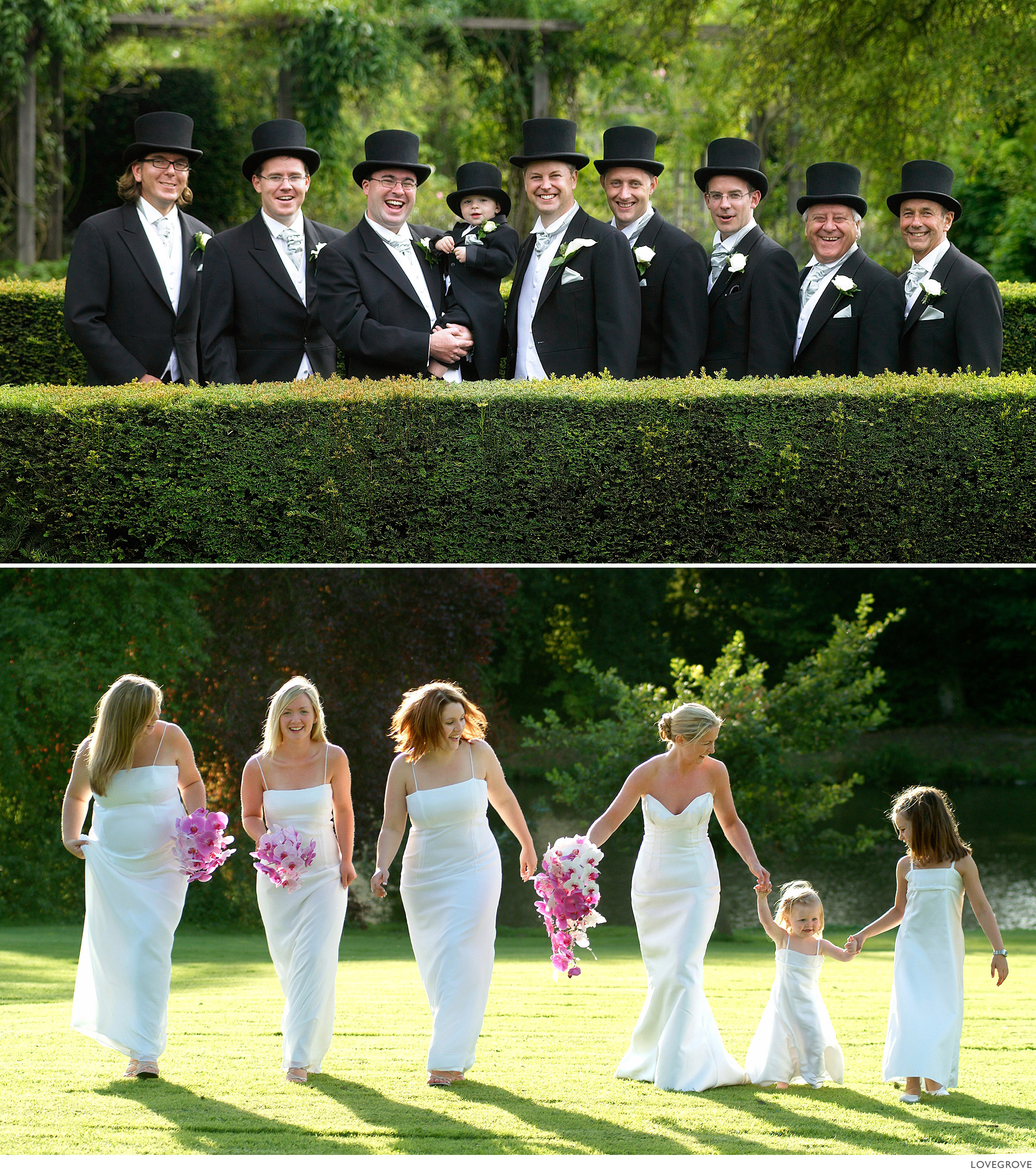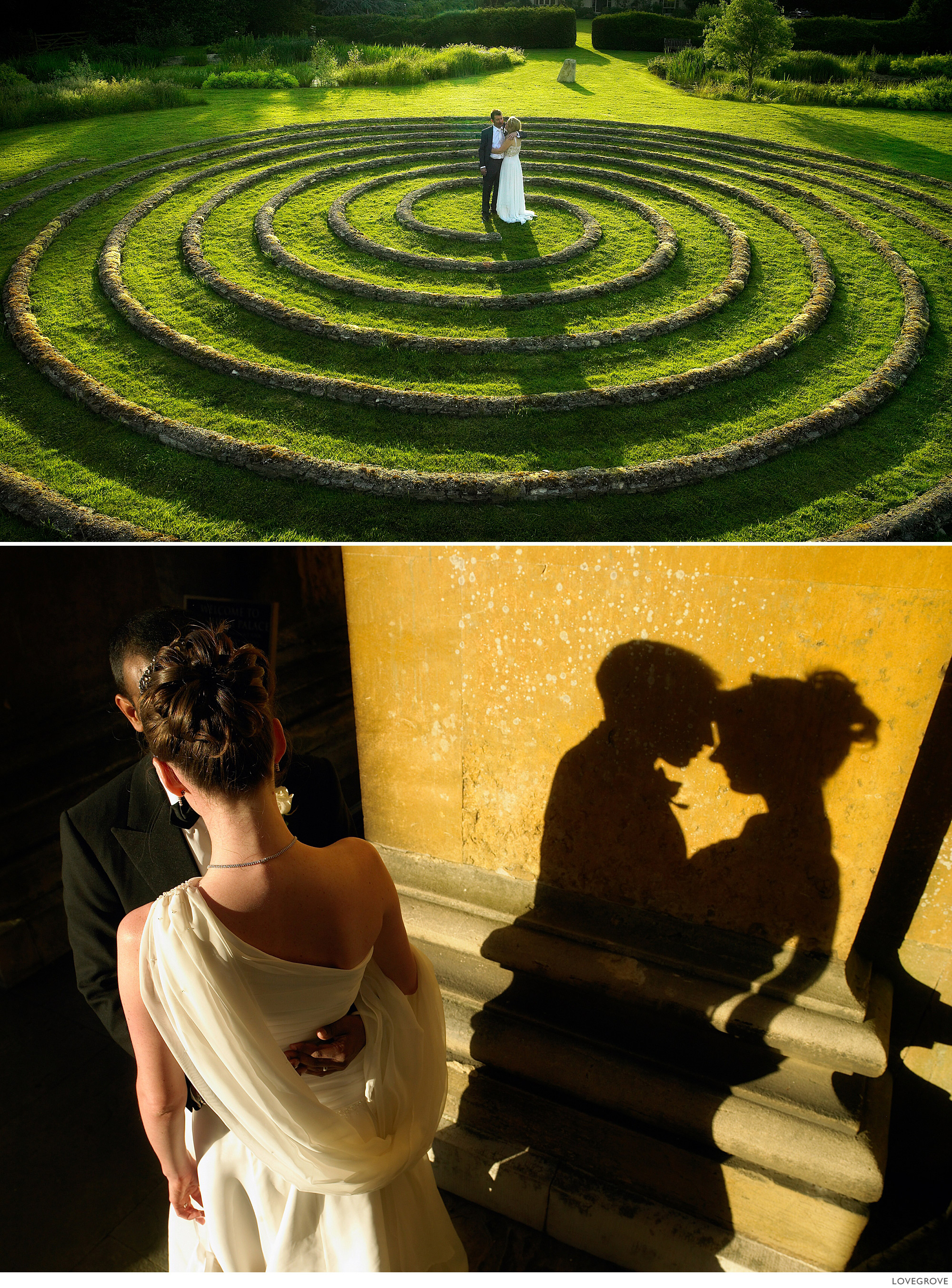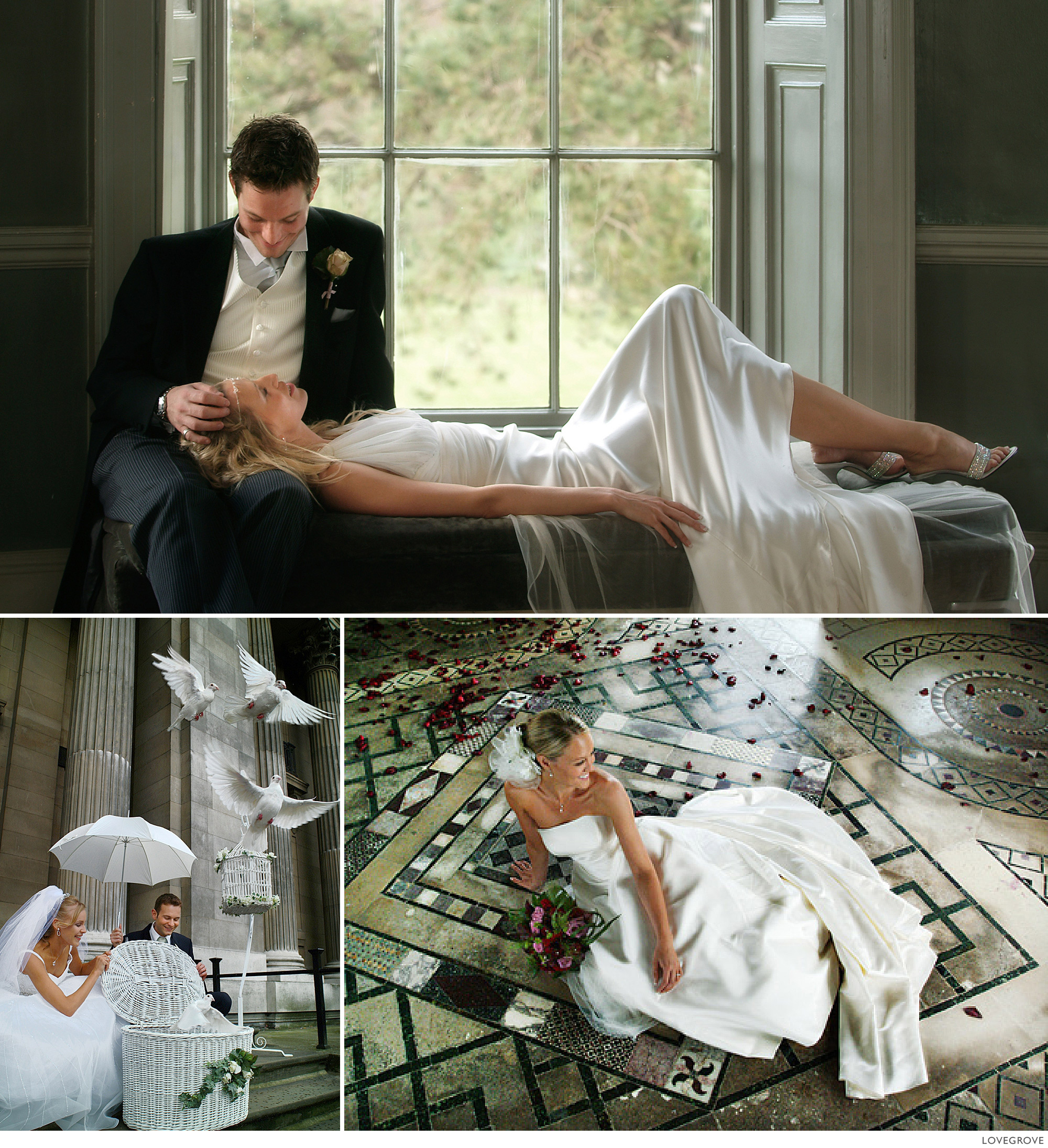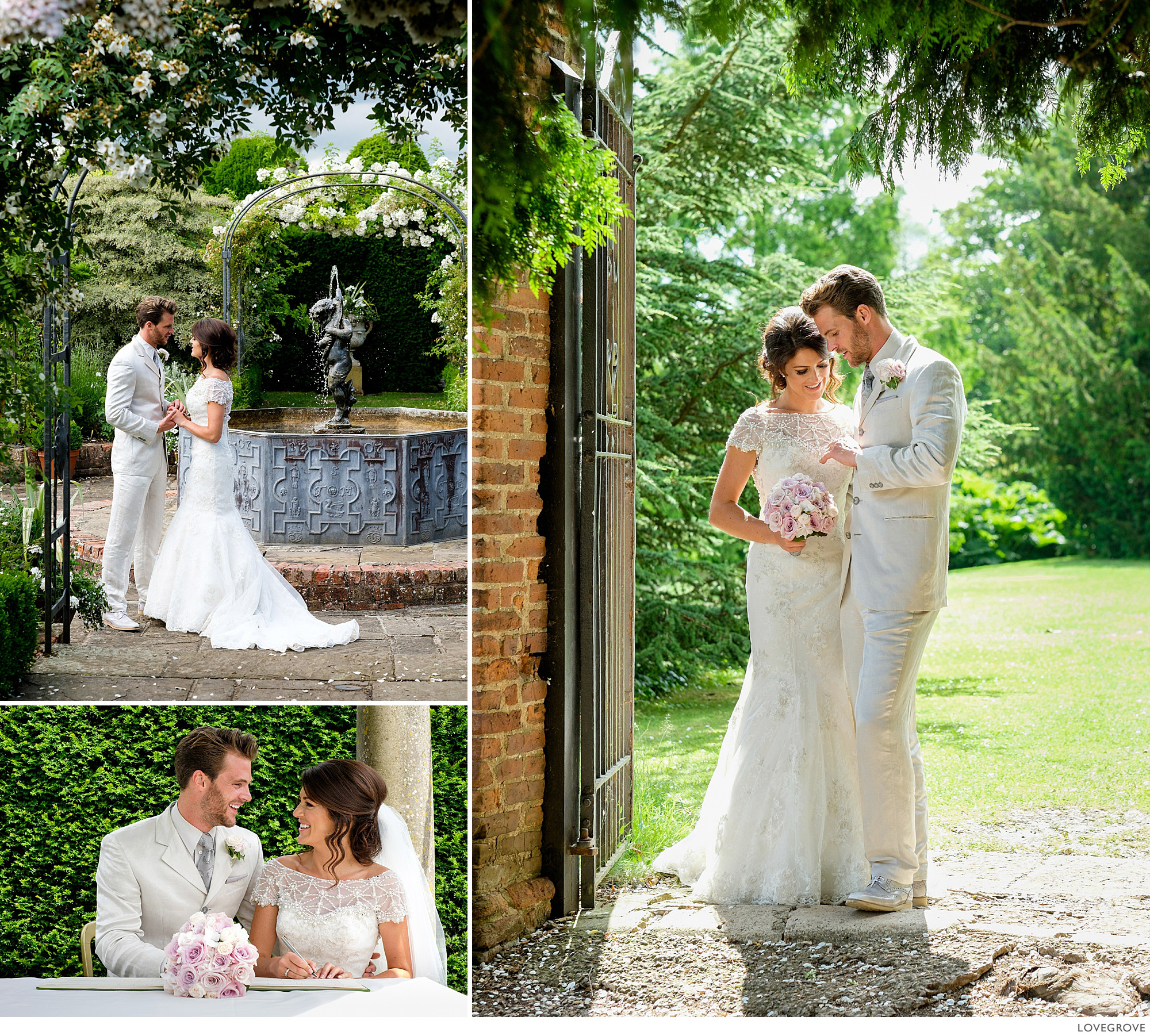In this quick guide I will share with you my thoughts on how to develop a style in photography. The first thing to note is that a style consists of a set of established rules that are loosely adhered to. It is fair to say that the classical rules of thirds etc are what most people use and their pictures ‘fit in’ as a result. If you want your work to ‘stand out’ you need to come up with some simple rules of your own.
When I established the style rules for Lovegrove wedding photography back at the turn of the century a Lovegrove album was instantly recognisable. It led to my wife and I having a fabulous career that ran for 10 years and we shot over 400 weddings.
Here are the rules we made for wedding photography that established the Lovegrove style.
- Shoot everything at f/4
- Shoot into the light whenever possible
- Do not include sky in the pictures
- Shoot with a wide lens or a tight lens but not a standard lens
- Shoot sequences with a rhythm
- Avoid all fashionable traits
- Compose with dramatic proportions
- Celebrate shadows
- Never attach a flash to the camera
- Don’t use high ISO, light the subject instead
1. The f/4 choice was because at the time Images shot at f/2.8 were a bit soggy on our Canon and Nikon zooms and the depth of field so shallow. This was especially true when using the 70-200mm. Because we took shots that included two people or more we opted for f/4 throughout. We wanted the same look to all our pictures in the wedding album so we used the same aperture for everything. Every feature film at the time and the TV dramas that I had been working on at the BBC were being shot at one aperture. Various ND filters were used in the matte box to keep the exposure correct for the given aperture. We did the same at weddings although we could change the shutter speed or ISO to avoid the need for ND filters.
2. Shooting into the light was not the norm for wedding photographers. Especially for the group shots. We always used decent lens hoods and with everyone lined up carefully f/4 was quite enough. I love shadows that come towards the lens. I often seemed to shoot what I called a 5 O’clock shadow. If the subject was at the centre of a clock face their shadow would be at about the 5 O’clock position.
3. A sky has to be amazing for us to consider including it in the frame. The same is true for film and TV productions. I really don’t like having highlights at the top of the frame drawing attention away from the subject
4. By not using the kind of lens that the instant cameras of the day were using it kept our work different. This was an era before smartphones and the digital revolution.
5. We set out to shoot an establishing wide shot then several close ups in each scene, just like in the movies. Typical scenes on the wedding day include; the guys on the golf course, the guys in the pub, the guys getting ready, the guys at the church meeting and greeting the guests, The girls having a Champagne breakfast, the girls having their hair and make up done, the wedding dress being adjusted, the bride leaving the house etc. Each ‘scene’ became a double page spread in the wedding album and each page turn subsequently became a scene change. We were with the guys for one scene then with the girls for another. Then back to the guys followed by the girls again. We had two stories running through the album in parallel. That was all part of the Lovegrove style. These were the kinds of simple ideas that set our albums apart. Even if you will never shoot a wedding you can use design style cues like this to document a holiday or event and when you come to make up a photo book it will flow nicely together.
6. By keeping the camera upright and avoiding ‘vintage’ looks or sepia tones means that our albums will survive the test of time. We didn’t soften skin either because what was fashionable a few years ago is already looking ridiculous. We chose to stick to pure black and white or pure colour printing. Even today I only use Pro Neg S colour film simulation or Acros G film simulation in my cameras. I don’t use canned presets or looks that are unnatural either.
7. I love composing a shot with someone looking out of it the wrong way because it creates tension. It’s a style trait I use more in portraiture than wedding work but we used to use quarters or fifths rather than thirds a lot in our compositions.
8. Shadows were to be embraced or where they were lacking we created them. At the time our competitors were ‘fill flashing’ or avoiding direct sunlight. This was an easy way to create a stand out signature look.
9. By always working with off camera flash our shots looked crisp and punchy. The lighting angle from above and to the side was far more flattering than flash on camera.
10. For many years before the era of the Fujifilm X series I was using a Phase One P25 back on a Hasselblad camera to shoot weddings and on that digital back ISO 400 was the maximum useable setting. That was not a problem because I lit almost every scene. While everyone around us was upping the ISO to avoid the need for flash or tungsten lighting we were creating a bit of magic with lights. With the arrival of Fujifilm X series mirrorless cameras shooting weddings became so much easier. The Fujifilm lenses are great wide open. The cameras nail focus every time and the colours are sublime straight from camera. What could possibly go wrong?
That is how we chose to set out our rules for shooting weddings. With each new genre that I’ve shot since then I’ve adapted these rules accordingly. The advantages of working with your own rules are simple because when you apply them you already know how to shoot each frame and with what lens. There is no reason to use the universal rules that everyone else uses when you can make up a few of your own.
Conclusion
The quickest way to establish a new style is to leave all your lenses at home except one. If you happen to like moderate wide angles then the Fujifilm X-100F might just be perfect for you. Leave it on one aperture, use one film simulation and again you are starting to refine your picture style.
For the past two years I have changed style. I have chosen to use just one camera, the GFX50s with two lenses, the GF 32-64mm and the GF 110mm. Both of these lenses have been constantly set to wide open and I’ve used a tripod for every one of my shots too. By being strict with myself it has instilled a look to my work. Perhaps it has lost the freedom that I had shooting hand held with X series. The new style has far more precise framing and care of details. I’m shooting the GFX like I did with Medium format in the past.
I’m pretty sure if you come away from a shoot or project with a strong body of work that is self supporting, eloquent and of one style you have achieved greatness.

Here is a behind the scenes documentary of Julie and I shooting a real wedding. It was shot 10 years ago and in standard definition by two professional crews. If you have a sense of adventure and want to develop your picture style further take a look here.

























